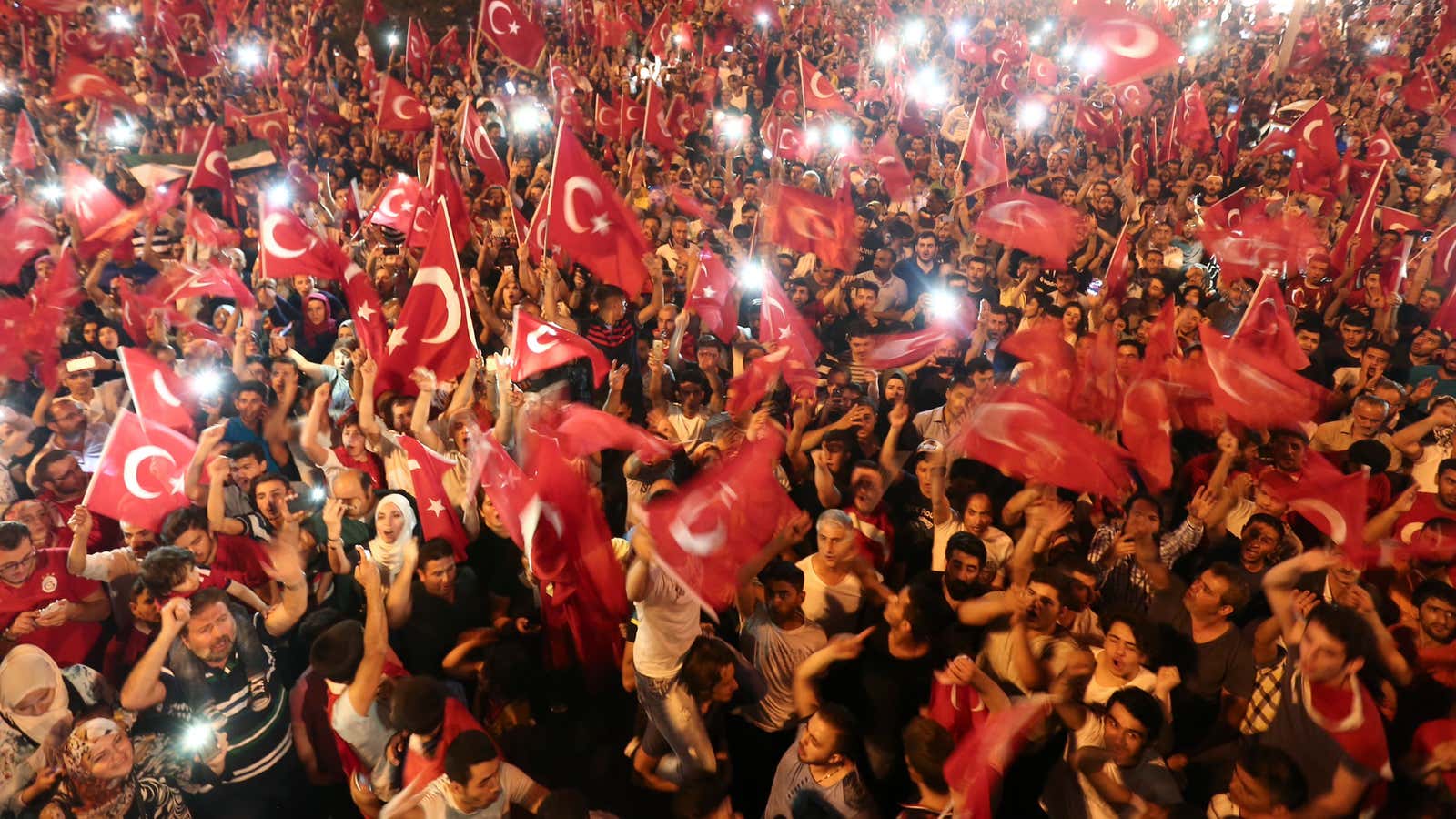Public places are the architectural definitions of democracy’s foundational notions—that we are all together, of equal voice, and connected by a common set of aspirations.
However, in the past decade, two types of public spaces have emerged: the real one, and the virtual one. And when either of these spaces comes under attack, it is not just communication infrastructure that’s imperiled—it is an attack on the community itself. Because without a place to commune, either online or in person, community crumbles.
The potent interchanges between real and cyberspace were played out this weekend with the dramatic events in Turkey. During the rogue military group’s attempts to overthrow Turkey’s sitting government, social media channels became blocked and internet traffic was cut in half. Those causing the blackout understood that the control of a country resides in the ownership of the public realm, whether that’s in real or virtual space. Control those places—mute the voice.
Battles for control of social media to quell dissent are becoming incredibly common. China has routinely attempted to control demonstrations by blocking or filtering social media, such as during the Jasmine Revolution. In Egypt, internet censorship was widespread during the Arab Spring demonstrations but had little ultimate effect. The (recently) former British prime minister David Cameron even proposed similar clampdowns on social media following widespread riots in England in 2011.
With the advent of social media’s influence, some would say that real places have become dispensable: Movements can now be spread with stunning nimbleness across entire continents, carried by nothing more than a few keystrokes. And no action in a public place can elude the lens of the phone cameras in the hands of thousands of broadcasting onlookers. The resulting footage can ultimately shape opinion and action far beyond the bounds of the geographic space in which it was taken.
With the availability of so many channels of digital connectivity, it’s now much more difficult to silence the masses, no matter how many bullets fly or how many tanks roll through the streets. Domineering physical space can immobilize bodies, but it is harder to take command over a people’s minds.
But what happens to this information immunity when someone turns out the lights?
Choking out Twitter, Facebook, YouTube, and the public broadcasters is just as important—if not more so—than physically closing a bridge or sealing a square. Not only does it deny the people a voice with which to talk to the outside world, but they are also denying the people a chance to talk to each other. Hearing one another’s voices and seeing one another’s faces raises the emotional pitch of a group, creating solidarity and the motivation to act.
With the virtual space occupied, President Recep Erdogan urged Turkey’s citizens to turn out on the streets of Turkey to voice their protest and show their might (and even used the call to prayer to do so). In courageous defiance of the announced curfews, citizens poured onto the streets, filled public spaces, and marched to the airport to greet a returning Erdogan, all the while facing down tanks and bullets with only the strength of their convictions to protect them.
For Erdogan, the public place had become the space of last resort. When the virtual spaces were muted, it was all he had left to assert control.
Without a virtual space to gather, the real spaces of Turkey took on incredible potency. Not only did the crowds of protesters help to bolster Erdogan’s claim to leadership, but they also sent out a flare to the international community for help. For though the people have been denied a microphone through which to speak, the gathering of their bodies in one place sends an even stronger visual message to the outside world: That we are fighting this, and we’re doing it together.
As the world becomes fully digitized, the greatest stakes in human conflict reside in information: what can be seen and what is hidden, what can be known and what is kept a secret. But when the power goes out of the networks, the veil is lifted and the bricks and stone that undergird human society are revealed again. Place—the real, physical kind—can always unite us.
